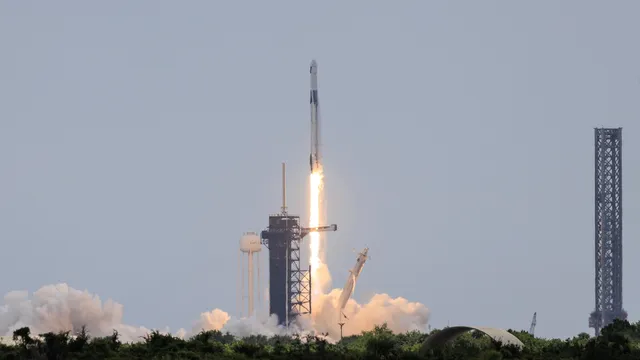SpaceX canceled a planned test flight of its mega-rocket Starship after saying it needed time to fix technical issues — another setback for Elon Musk’s giant following a series of explosive failures, AFP reported. The difficulties have led some observers to question whether the world’s largest and most powerful rocket will be able to return humans to the Moon or achieve Musk’s ambition of colonizing Mars.
The launch had been scheduled for 18:30 local time (23:30 GMT) from the company’s Starbase facility in south Texas and would have been the tenth flight for Starship. About 15 minutes before liftoff, however, SpaceX announced the scrub. “We are standing down from tonight’s tenth Starship flight to allow time to resolve an issue with ground systems,” the company said on X, without giving details.
Earlier SpaceX had said the upper stage was already being fueled, creating the impression the launch would proceed. Musk himself posted on X an hour earlier: “Starship 10 lifts tonight.” Road closure notices around Starbase suggested the flight could be rescheduled for Monday or Tuesday, but SpaceX gave no firm timeline.
The mission, expected to last about an hour, was to put the upper stage through a series of in-flight tests around roughly half the globe before the booster was to splash down in the Indian Ocean.
Starship is central to Musk’s vision for Mars colonization, while NASA is relying on a modified version to return Americans to the Moon. But the rocket’s upper stage — intended to carry crew and cargo — has exploded on all three test flights so far in 2025. Two of those events scattered debris over the Caribbean, and the third reached space before breaking apart. In June there was another explosion during a static ground test.
At 123 metres (403 feet) tall, Starship is designed to be fully reusable, but so far SpaceX has not succeeded in placing useful payloads into orbit with it or in recovering the upper stage intact. After the last failure in May the company said it would “push the structural limits” of the design to test its resilience. The booster stage has been successfully caught three times by the tower’s giant mechanical “chopsticks,” but this tenth flight did not include such an attempt.
The company’s “fail fast, learn fast” philosophy helped it dominate the commercial launch market with the Falcon rockets, but the run of failures with the largest rocket in history has raised doubts about whether that success can be repeated.
“I think the pressure on this mission is enormous,” said Dallas Kasaboski, a space industry analyst at Analysys Mason, ahead of the scrubbed launch. “There have been so many tests and the system still hasn’t proven reliable — the failures outweigh the successes.”
Former engineer and commentator Will Lockett went further, saying Starship’s inability to put payloads into orbit shows the concept is “fundamentally flawed.”
The world’s richest man has staked his company’s future on Starship, planning to phase out the current generation of rockets in favor of the new system. But even if the tenth flight succeeds, major challenges remain — from delivering rapid, low-cost reusability to demonstrating on-orbit refueling with supercooled propellants, a prerequisite for deep-space missions.
SpaceX is continuing to increase its flight tempo despite criticism from environmentalists about ecological impacts. The U.S. Federal Aviation Administration (FAA) said last week it had completed its investigation of the most recent explosion and that there were no injuries.
Musk, known for his highly ambitious timetables, insists the first uncrewed Starship missions to Mars will be launched next year. | BGNES

 Breaking news
Breaking news
 Europe
Europe
 Bulgaria
Bulgaria







